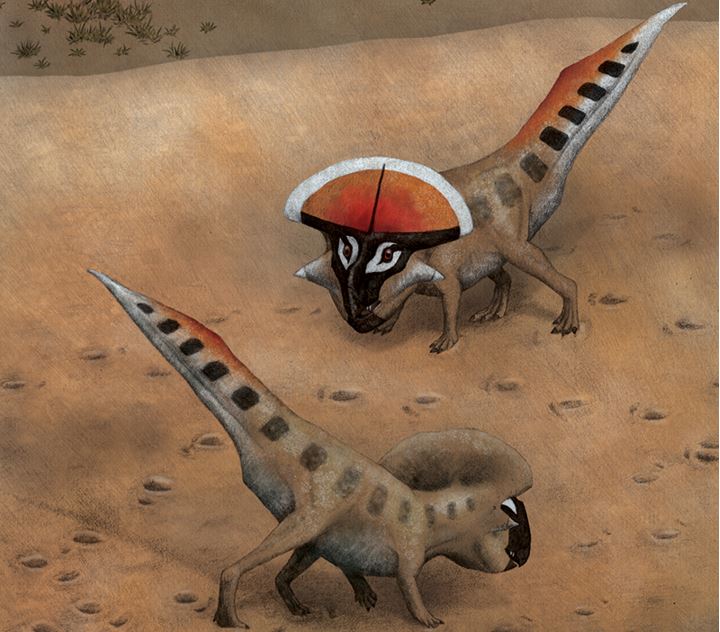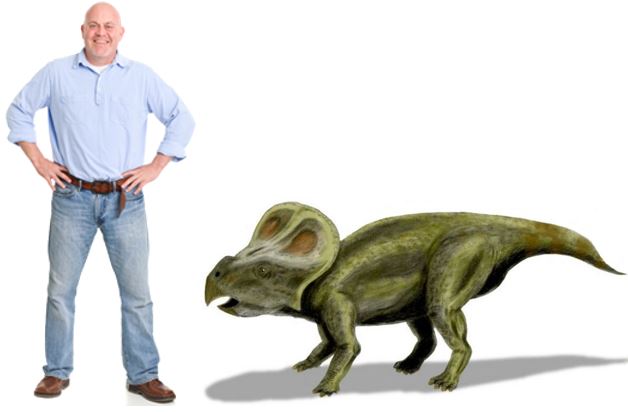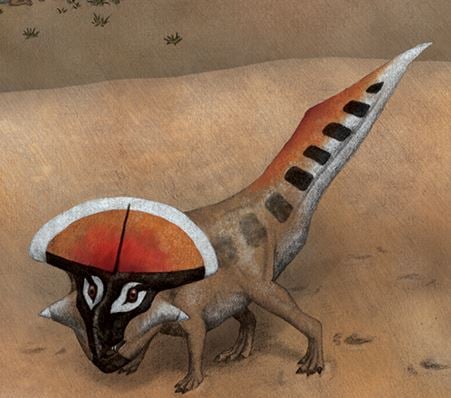Dinosaurs showed off sexual display and practiced social dominance to attract or secure mates, researchers from Queen Mary University of London report. Ornamental structures such as head crests and horns became much more prominent as the animals matured, fossil samples show.
Sexual selection is a powerful and almost ubiquitous evolutionary pressure that is responsible for much of the physical and behavioural diversity of modern animals, and which scientists presume was also an important evolutionary driver in the past.
Sexual selection refers to the natural selection an animal of one sex makes for certain characteristics in individuals of the other sex. For example, in some species of birds, the female chooses the male with the most impressive colouring or feathers as her mate. It also refers to competition between members of the same sex (social dominance) – this can include fighting.
 Male Protoceratops had large frills, which were either used to attract females, or social dominance, i.e. drive away other males, or perhaps both. (Image: palaeo-electronica.org)
Male Protoceratops had large frills, which were either used to attract females, or social dominance, i.e. drive away other males, or perhaps both. (Image: palaeo-electronica.org)
Protoceratops had frills to attract females
Dr. David Hone, a lecturer in Zoology at Queen Mary University of London’s School of Biological and Chemical Sciences, and colleagues studied fossils of the protoceratops – 1.8-metre long sheep-sized herbivorous dinosaurs.
Protoceratops existed in the late Cretaceous period, about 86 to 71 million years ago, towards the end of the Mesozoic, known as the Age of Reptiles.
The scientists explained in the journal Palaeontologia Electronica that by studying large ornamental structures on the animals’ bodies, such as head crests and horns, they discovered that they were absent in juveniles but common in adults.
Dr. Horne said that as the juvenile dinosaurs reached maturity, they developed ‘disproportionately’ larger frills, i.e. the frills grew at a faster rate than the rest of the body.
Studying sexual selection among modern animals is easy – you determine what they look like and observe their behaviours. This is not possible with extinct animals; we cannot observe how they behaved. Consequently, scientists have to fall back on more indirect assessments of whether a physical feature evolved through natural selection – one being the rate of change of the traits during ontogeny (from birth to maturity).
 A 1.8-metre (5ft 10in) man next to a protoceratop. They were relatively small dinosaurs that probably lived in herds.
A 1.8-metre (5ft 10in) man next to a protoceratop. They were relatively small dinosaurs that probably lived in herds.
Dr. Horne said:
“Palaeontologists have long suspected that many of the strange features we see in dinosaurs were linked to sexual display and social dominance but this is very hard to show.”
“The growth pattern we see in protoceratops matches that seen for signalling structures in numerous different living species and forms a coherent pattern from very young animals right through to large adults.”
The research team, who studied 37 fossil specimens, believe the function of the frills was associated with sexual selection because they suddenly increased as the animals reached maturity.
Sexual selection has important function in shaping biodiversity
Dr Rob Knell, Reader in Evolutionary Ecology, at School of Biological and Chemical Sciences, QMUL, said:
“Biologists are increasingly realising that sexual selection is a massively important force in shaping biodiversity both now and in the past.”
“Not only does sexual selection account for most of the stranger, prettier and more impressive features that we see in the animal kingdom, it also seems to play a part in determining how new species arise, and there is increasing evidence that it also has effects on extinction rates and on the ways by which animals are able to adapt to changing environments.”
Regarding their findings, the authors concluded:
“These results therefore provide an important step in assessing the function of such features in the fossil record and provide confirmation that these likely evolved as a result of pressures favouring socio-sexual dominance signals.”
Citation: Hone, David W. E., Wood, Dylan, and Knell, Robert J. 2016. “Positive allometry for exaggerated structures in the ceratopsian dinosaur Protoceratops andrewsi supports socio-sexual signaling.” Palaeontologia Electronica 19.1.5A: 1-13. Published January 2016.
Video – Protoceratops
Although they were herbivores and fairly small, they had powerful beaks that could probably snap off a human arm easily.


Comments are closed.